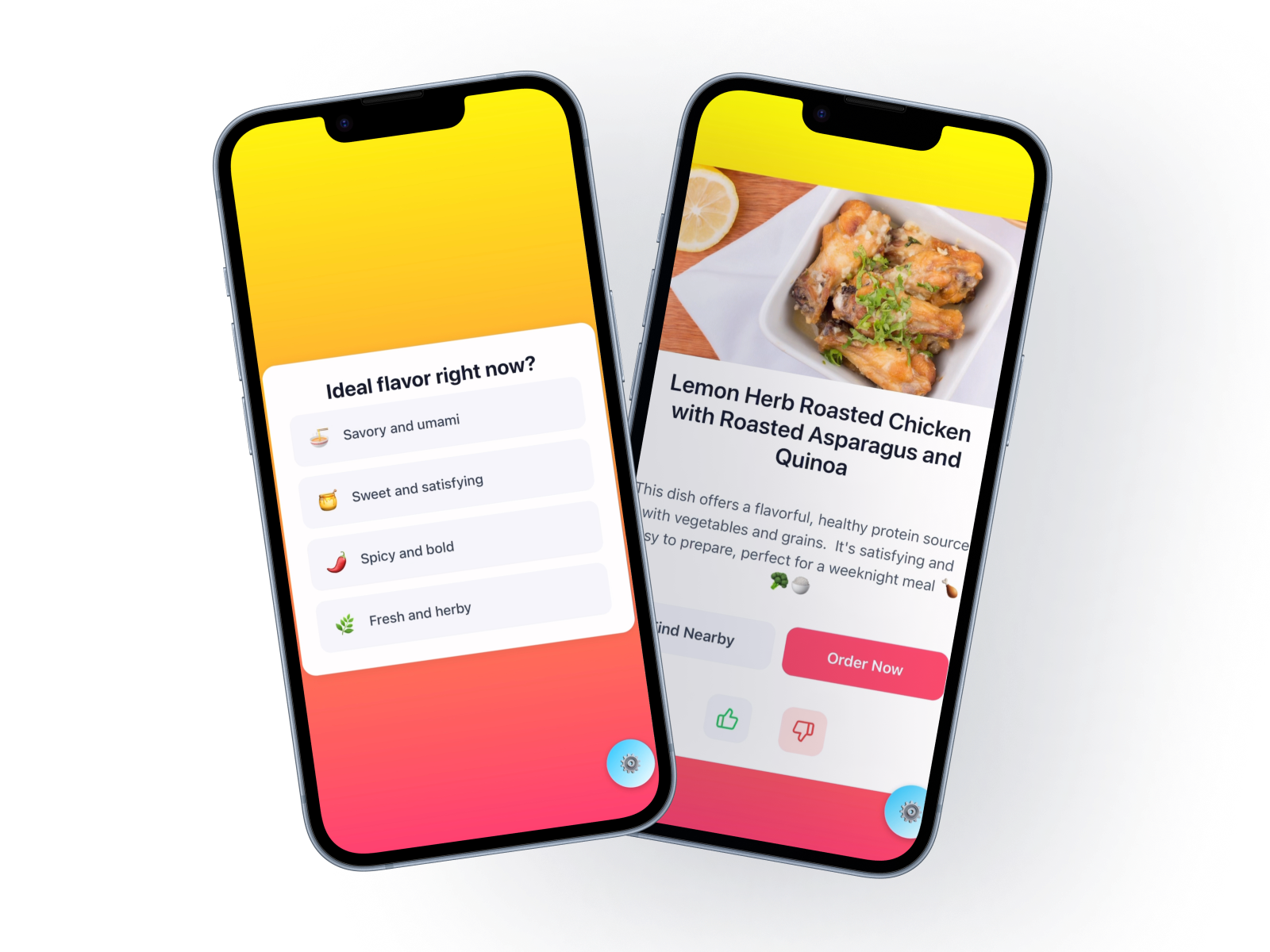Food delivery apps suffer from a key drop-off: users spend 8-10 minutes browsing before ordering, and 30% abandon without completing a purchase.
Moodish
AI-powered meal recommendations based on how you feel

AI-powered meal recommendations based on how you feel

Food delivery apps suffer from a key drop-off: users spend 8-10 minutes browsing before ordering, and 30% abandon without completing a purchase.
Interviews with 11 users revealed a core mismatch between what apps offer and what users actually need.
Apps ask "What cuisine do you want?" while users think "I don't know what I'm in the mood for."
This disconnect revealed a deeper truth:
Food choices are driven by emotion, not logic. Users weren't asking for more options — they wanted guidance.
Moodish is an AI-powered app that recommends meals based on how you feel, not just past orders or cuisine categories.
Answer 4-5 quick multiple-choice questions about mood
AI agent delivers your meal recommendation with photo and personalized reasoning
Order directly through your preferred delivery app or discover nearby restaurants
Collaborated with engineering team to implement AI personalization with cost constraints, using structured prompts to keep API costs under $0.15 per recommendation while maintaining quality.
This approach reduced browsing time from 8-10 minutes to under 3 minutes, replacing decision fatigue with confidence.